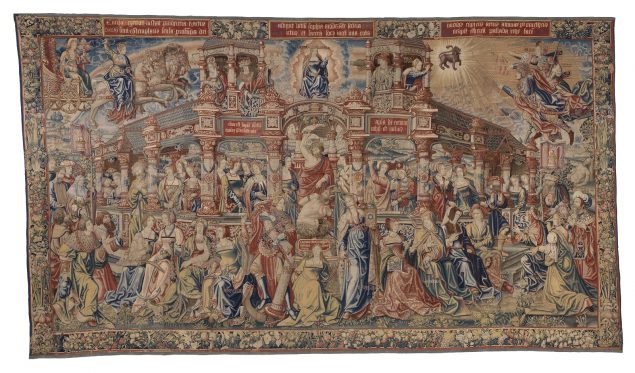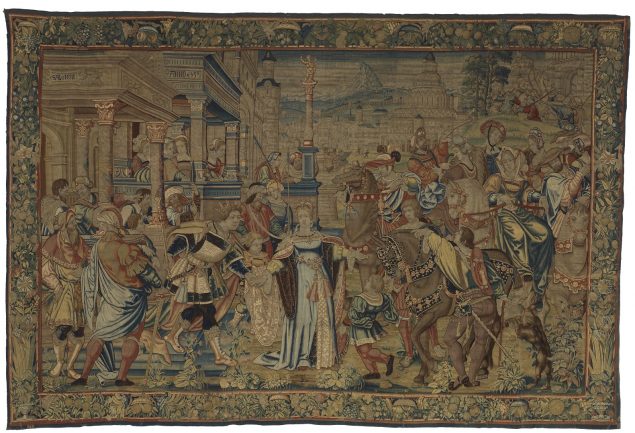The extraordinary collection of some 200 European, mainly medieval and renaissance, tapestries acquired by Glasgow shipping magnate Sir William Burrell (1861–1958) is one of the largest and most important tapestry collections in the world. Although attempts to catalogue Burrell’s tapestries have been made in the past, most have never been published until now.
Tapestries from the Burrell Collection presents for the first time the tapestries in Glasgow’s Burrell Collection. Lavishly illustrated with new photography of each tapestry, this scholarly but accessible analysis will appeal to specialists and the general public alike.
Cataloguing first began in the 1940s, but it was not until 2008, with funding from the Esmée Fairbairn Foundation and Sir William Burrell Trustees that work could recommence in earnest. Dr Elizabeth Cleland (Associate Curator at The Metropolitan Museum) and Dr Lorraine Karafel (Assistant Professor at the Parsons School of Design) were engaged to carry out the research, whilst Glasgow Museums’ staff undertook the process of carefully unrolling, photographing and assessing the condition of all 200 tapestries. Elizabeth Hancock, Glasgow University, also contributed to the research of the provenance and exhibition histories of each of Sir William Burrell’s tapestries.

Probably designed by Bernard van Orley and workshop, with collaborators, The Honours: Virtue, probably woven in Brussels between ca. 1525-32, (460 × 807cm)
Burrell Collection, Glasgow
© CSG CIC Glasgow Museums Collection
Burrell’s tapestry collection
Tapestries represented one of the major interests of Sir William Burrell (1861–1958). Over a period of 60 years, Burrell and his wife, Constance, decorated their homes extensively with many tapestries adorning the walls. Photographs of 8 Great Western Terrace, Glasgow, and Hutton Castle, Scottish Borders, show several of Burrell’s early purchases hung or mounted on the walls.
The collection comprises 201 tapestries, of which circa 120 are attributed to Netherlandish weavers from the fifteenth and sixteenth centuries. Eight pieces are seventeenth- to eighteenth-century and are attributed to Dutch weavers. The collection also includes tapestries of German and Swiss origin, and some that were attributed to Flemish weavers working in England.

Designed by an artist in the circle of Pieter Coecke van Aelst, Bathsheba Leading Solomon to David’s Mule, woven in Brussels after 1530 (360 × 535cm)
Burrell Collection, Glasgow © CSG CIC Glasgow Museums Collection
Exhibition at Kelvingrove
Examples of these works are currently on show at Burrell at Kelvingrove:Tapestries. This exhibition gives the public the rare opportunity to see medieval and renaissance works from circa 1350 – 1725, including two which have not been on public display since 1901. Each of the works on display is fully illustrated in the new publication.
Tapestries from the Burrell Collection
Elizabeth Cleland and Lorraine Karafel
728 pages and 475 color illustrations
London (I.B. Tauris) 2017
